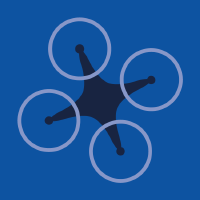Topic Editors




Remote Sensing and Geoinformatics in Agriculture and Environment Volume II
Topic Information
Dear Colleagues,
Nowadays, the evolution of new technologies for spatial data collection—UAV drones, digital cameras, satellite data, sensors and more—their transmission in IoT technologies (Internet of Things), their emergence via Internet and their analysis through GIS provide enhanced capabilities and significant impetus for solving and confronting contemporary issues faced by agriculture, as well as by environmental sustainability. New innovative sensors carried on Earth observation instruments, tractors and field measuring devices are constantly collecting high-resolution, multitemporal and multispectral data, which supplement and integrate the data collected with more traditional approaches. GIS and other geospatial technologies shape these data into information that is accessible and interpretable by farmers and land managers to make efficient and informed decisions. At the same time, geospatial analyses of the human impact on the environment are crucial for a better understanding of the underlying relationships and processes. Advanced Earth observation technologies and geoinformatics are paving the way towards a better understanding of ecological and environmental interactions, identifying early indicators of environmental degradation and improving our capacity for risk assessment, timely forecast and response. Every single year brings much progress in remote sensing, GIS and spatial analysis methodologies and technologies in agriculture and environment. The goal of this Topic is to collect papers (original research articles and review papers) summarizing the contemporary progress and achievements of remote sensing and geoinformatics in agriculture and environment, and to highlight the recent advancements and novel applications in a wide spectrum of respective topics. This Topic will welcome manuscripts focusing on Earth observation, GIS and spatial analysis applications such as satellite data, geoinformatics and geospatial technologies, Web-GIS, GNSS and GPS, IoT, land information systems, spatial exploratory data analysis, spatial statistical models, spatial interpolation, geostatistics, neural networks and AI and the use of cloud services for the management of spatial data of large volume, in the following topics:
- Land suitability classification;
- Soil resources protection, land assessment and land use planning;
- Water resources analysis, planning and management;
- Ecosystem protection, restoration and management;
- Forests evaluation and management;
- Natural hazards, geohazards—natural disasters (floods, droughts, fires, landslides, etc.);
- Spatial digital management of farms and agricultural holdings;
- Precision agriculture, smart farming and data collection via spatial digital technologies;
- Agricultural production and agricultural ecosystems monitoring;
- Crop protection, pest and diseases management;
- Weeds—invasive species;
- Soil nutrients and fertility management;
- Sustainable fishery through contemporary geospatial technologies’ application;
- Livestock and pastures management;
- Food security and food safety.
We look forward to receiving your original research articles and reviews.
Prof. Dr. Dionissios Kalivas
Dr. Thomas Alexandridis
Dr. Konstantinos X. Soulis
Dr. Emmanouil Psomiadis
Topic Editors
Keywords
- Earth observation
- spatial analysis
- geoinformatics
- GIS
- remote sensing
- precision agriculture
- natural resources
- environment
Participating Journals
| Journal Name | Impact Factor | CiteScore | Launched Year | First Decision (median) | APC | |
|---|---|---|---|---|---|---|

Agriculture
|
3.6 | 3.6 | 2011 | 17.7 Days | CHF 2600 | Submit |

Drones
|
4.8 | 6.1 | 2017 | 17.9 Days | CHF 2600 | Submit |

Geomatics
|
- | - | 2021 | 18.6 Days | CHF 1000 | Submit |

Land
|
3.9 | 3.7 | 2012 | 14.8 Days | CHF 2600 | Submit |

Remote Sensing
|
5.0 | 7.9 | 2009 | 23 Days | CHF 2700 | Submit |

MDPI Topics is cooperating with Preprints.org and has built a direct connection between MDPI journals and Preprints.org. Authors are encouraged to enjoy the benefits by posting a preprint at Preprints.org prior to publication:
- Immediately share your ideas ahead of publication and establish your research priority;
- Protect your idea from being stolen with this time-stamped preprint article;
- Enhance the exposure and impact of your research;
- Receive feedback from your peers in advance;
- Have it indexed in Web of Science (Preprint Citation Index), Google Scholar, Crossref, SHARE, PrePubMed, Scilit and Europe PMC.

